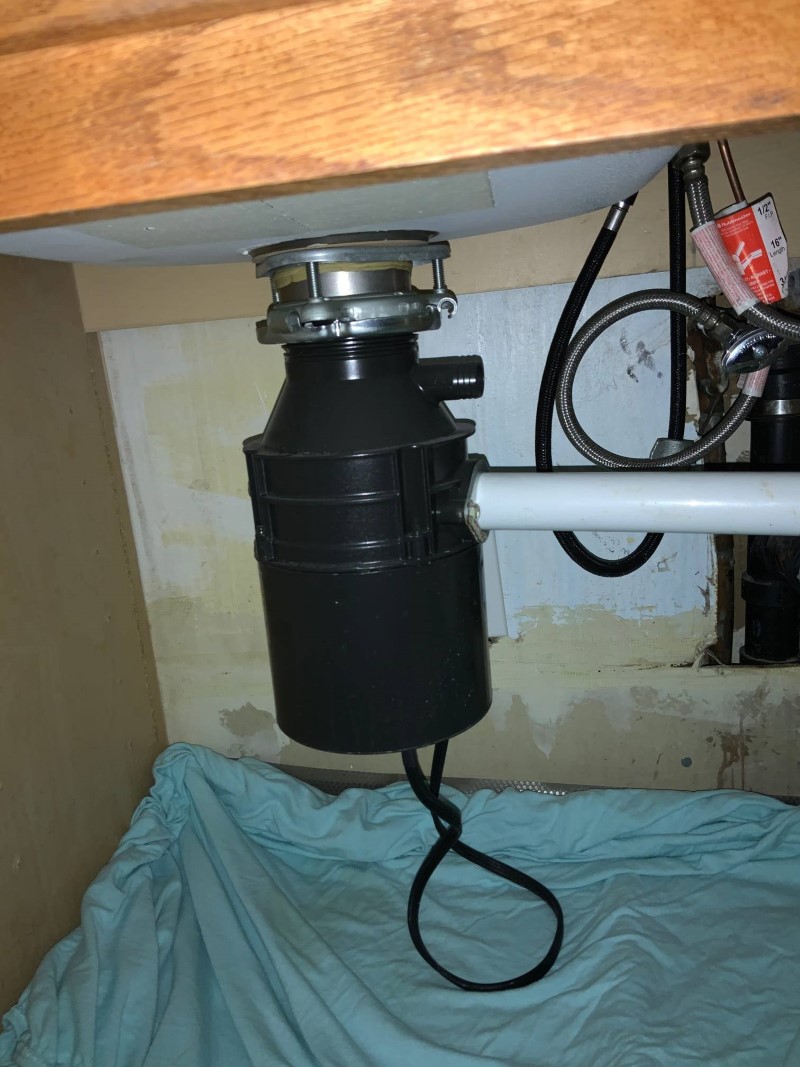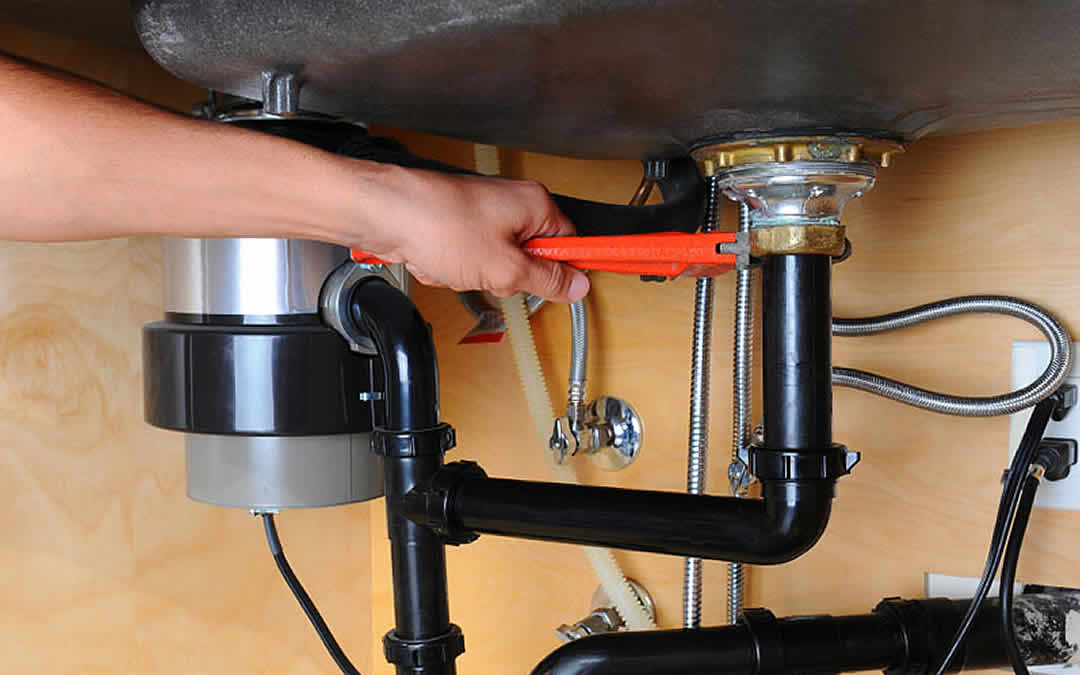Easy-to-Follow Techniques for Repairing a Leaky Garbage Disposal
Easy-to-Follow Techniques for Repairing a Leaky Garbage Disposal
Blog Article
We have stumbled on this post on The Handy Guide To Fixing Your Garbage Disposal Leaking down the page on the internet and concluded it made sense to write about it with you on my blog.

Garbage disposals are essential cooking area home appliances that assist in dealing with food waste effectively. However, a leaking waste disposal unit can be a discouraging and untidy issue to handle. Luckily, numerous leakages can be taken care of conveniently with a few simple actions. In this write-up, we will talk about exactly how to fix a leaking waste disposal unit properly.
Intro
Garbage disposals are installed under kitchen sinks and are made to shred food waste right into smaller items, permitting it to travel through the plumbing system easily. While these devices are usually trustworthy, leakages can take place over time as a result of damage, loosened connections, or damages to the device.
Step-by-Step Overview to Fixing a Dripping Garbage Disposal
Turn Off the Power
Before trying any repair services, guarantee that the power to the garbage disposal unit is turned off to prevent the risk of electric shock.
Situate the Leakage
Recognize the exact area of the leakage and identify the reason
Tighten Links
Utilize a wrench to tighten up any kind of loosened links in between the disposal unit and the pipes system.
Replace Seals or Gaskets
If the leakage is due to used seals or gaskets, get rid of the old components and change them with new ones.
Patching Splits or Openings
For fractures or openings in the disposal device, usage epoxy or an appropriate patching material to secure the damaged area.
Recognizing the Resource of the Leakage
Prior to attempting to repair a dripping garbage disposal, it is important to determine the resource of the leak. This can typically be done via visual assessment or by performing simple examinations.
Visual Inspection
Examine the garbage disposal system carefully for any indications of water leakage. Pay very close attention to areas around seals, gaskets, and link factors.
Examining for Leaks
One means to examine for leakages is by running water with the disposal system and checking for any visible indications of leakage.
Common Sources Of Leaks in Rubbish Disposals
Worn Seals and Gaskets
Seals and gaskets play an essential role in protecting against water from leaking out of the garbage disposal. In time, these elements can weaken, resulting in leakages around the disposal unit.
Loose Connections
The connections in between the garbage disposal and the plumbing system can come to be loosened gradually, creating water to leak out during operation.
Splits or Openings in the Disposal Unit
Physical damages to the garbage disposal, such as cracks or openings in the real estate, can additionally lead to leakages.
Tools and Materials Needed for Dealing With a Leaking Garbage Disposal
Prior to beginning the repair service procedure, collect the essential devices and products, including a screwdriver, adjustable wrench, plumbing's putty, replacement seals or gaskets, and epoxy or patching material for fixing fractures or holes.
Examining the Garbage Disposal After Repair
As soon as the repair work is full, check the waste disposal unit by running water via it to guarantee that the leakage has actually been fixed.
Preventive Upkeep Tips to Stay Clear Of Future Leaks
To prevent future leakages, it is vital to carry out regular upkeep on your garbage disposal. This includes keeping it tidy, preventing putting non-food products or difficult items down the disposal, and occasionally checking for leakages or various other problems.
Final thought
To conclude, taking care of a leaking garbage disposal is a reasonably uncomplicated process that can be completed with standard devices and materials. By following the actions detailed in this short article and exercising preventive upkeep, you can maintain your waste disposal unit in good working problem and prevent pricey repair services in the future.
HERE’S HOW TO FIX YOUR GARBAGE DISPOSAL
WHAT TO DO IF SOMETHING IS STUCK IN YOUR GARBAGE DISPOSAL
If the impeller won’t turn, there’s probably something stuck in the disposal. It could be a steak bone or peach pit, although plumbers report pulling all sorts of inappropriate objects out of disposals, such as bottle caps or aluminum foil. Make sure power to the disposal is off, and look inside to see if you can see the source of the jam.
Never stick your fingers in a disposal. Pull out anything you see with tongs or pliers.
If the disposal still won’t work, it may be time to call a plumber or consider buying a new disposal. GEM Plumbing & Heating is here for all of your garbage disposal needs.
WHAT TO DO IF YOUR GARBAGE DISPOSAL DRAIN IS CLOGGED
Take everything out from underneath your sink and put a bucket or other container under your disposal to catch any water that drains out. Disconnect your disposal from the power supply. If it’s plugged into a wall outlet, unplug it. If it’s hardwired into an electrical box, go to the electrical panel and turn off the breaker for the disposal. Pour ¼ cup of baking soda into the drain, followed by ½ cup of white vinegar. Give the solution a few minutes to fizz and do its work. Look into the disposal with a flashlight to see if you can see an object that might be causing the clog. If you see it, remove it using tongs or pliers. MORE TIPS ON DEALING WITH A CLOGGED GARBAGE DISPOSAL
Never use drain cleaner in a garbage disposal. It can damage the plastic parts inside the disposal. You can also be splashed with the caustic liquid while working to clear the clog. Beware! Never stick your fingers into a garbage disposal. Trust us — not a good idea. In many instances, your dishwasher drains through your garbage disposal. This allows the disposal to grind any large food particles that may be drained out of your dishwasher. There are some jurisdictions, however, where the plumbing code prohibits such a connection. WHAT TO DO WHEN YOUR DISHWASHER DRAINS THROUGH THE DISPOSAL
Run some water in the sink so your plunger has at least a ½-inch of water to create a seal and plunge vigorously up and down several times. You may need to repeat this several times. Run hot water down the drain to clear any residue that remains.

As an avid person who reads on Garbage Disposal Leaking From Bottom, I think sharing that segment was essential. Sharing is nice. Helping others is fun. Many thanks for your time. Kindly come visit our site back soon.
Visit Homepage Report this page